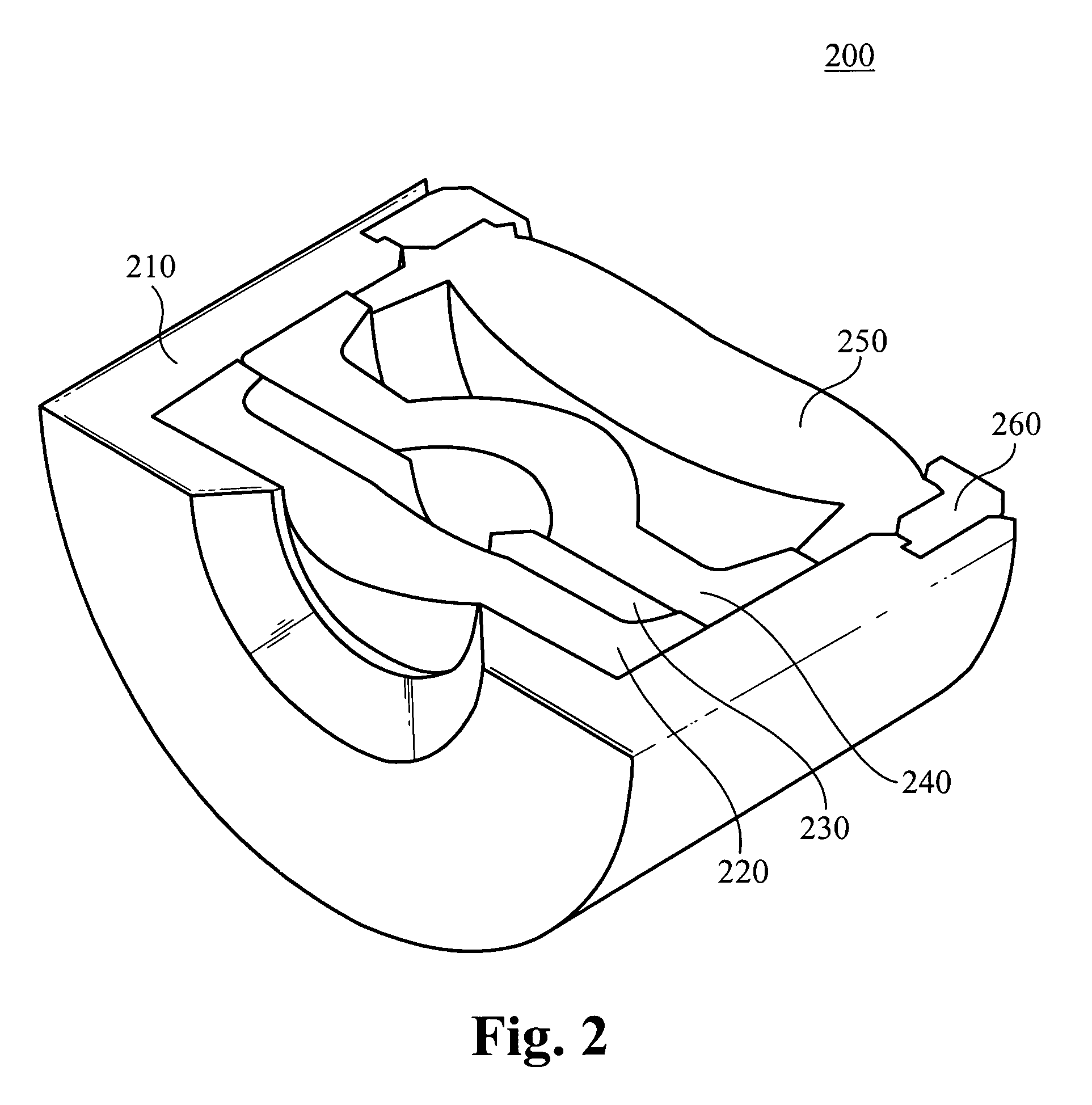Three-element photographic objective with reduced tolerance sensitivities
a three-element, sensitivity-reducing technology, applied in the field of wide-field photographic lens systems, can solve the problems of difficulty in consistently meeting performance specifications, lens system assemblies designed as photographic objectives for small-format image planes, and previous designs that were too sensitive to alignment errors, etc., to achieve the effect of less sensitive and easy to consistently m
- Summary
- Abstract
- Description
- Claims
- Application Information
AI Technical Summary
Benefits of technology
Problems solved by technology
Method used
Image
Examples
Embodiment Construction
[0015]The present invention discloses a compact three-lens system for use as a wide-field photographic objective for capturing images of objects with small format digital image sensors. This lens form is most effectively used in camera systems with image sensor resolutions between 640×480 pixels and 1280×960 pixels, and pixel dimensions less than 0.010 mm.
[0016]The lens form is configured as a modified triplet including an aperture stop shifted towards the object plane. A first lens in the lens form functions as a field lens such that the overall track length of the system can be kept relatively short while the chief ray angles incident at the image plane can be constrained to an angle significantly less than that of the field of view. The first lens, while maintaining the positive power of the classic triplet, takes the form of a relatively thick positive meniscus. Likewise, a second lens includes a relatively thick negative meniscus and a third lens includes a relatively thick pos...
PUM
 Login to View More
Login to View More Abstract
Description
Claims
Application Information
 Login to View More
Login to View More - R&D
- Intellectual Property
- Life Sciences
- Materials
- Tech Scout
- Unparalleled Data Quality
- Higher Quality Content
- 60% Fewer Hallucinations
Browse by: Latest US Patents, China's latest patents, Technical Efficacy Thesaurus, Application Domain, Technology Topic, Popular Technical Reports.
© 2025 PatSnap. All rights reserved.Legal|Privacy policy|Modern Slavery Act Transparency Statement|Sitemap|About US| Contact US: help@patsnap.com



